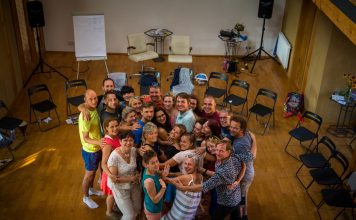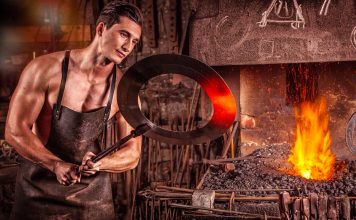With the backdrop of Monaco’s fabled coastline, hundreds of the world’s most luxuriously appointed motor and sailing yachts nestled hull to hull in the sunlit exhibition marina. As exclusive automobile partner, BMW presented at the Monaco Yacht Show the most supreme and luxurious rendition of hybrid technology ever seen so far in the automobile: the BMW ActiveHybrid 7. It combines a V8 gasoline engine, eight-speed automatic transmission and an electric motor. Furthermore, BMW introduced its pinnacle of automotive manufacturing with BMW Individual which meets even customer’s most exacting requirements in terms of highly exclusive appearance: a specially equipped BMW Individual 730d with the paint finish Citrine Black metallic and Merino leather Amaro Brown.
The Power of Design.
The teak deck and sparkling body of the “Cloud 9” created the perfect catwalk for Guido Maria Kretschmer´s maritime Couture show featuring sophisticated dresses and robes in supple satin. The show set the tone for the select panel, presented by Alice Rawsthorn, the design critic of the International Herald Tribune, including yacht designer Andrew Winch, the German couturier Guido Maria Kretschmer and Nikolaus Graf von Saurma-Jeltsch, director of the Munich Studio of BMW Group DesignworksUSA. Coming each from highly specified fields and dealing with a client base as diverse as private customers and large international corporations can be, the designers addressed the challenge of creating a contemporary notion of luxury based on desirability and the power of design to shape emotion and fuel success. To create an acme of design, quality, a passion for excellence and a clear understanding of the project must strike a balance between the designer’s vision and the wishes and needs of the customer.
“Luxury is about technology and being on the verge”, Nikolas von Saurma argued. Creating desirability includes fusing meaning and soul for a unique experience. The director of the BMW Group DesignworksUSA Munich branch has observed a big shift in the mindset of customers toward sustainability, citing the car industry as an example. “Automotive design today must answer to the clean car.” The sea change for a contemporary vision of luxury has moved from lush opulence to include meaning and substance. Yet, despite altered notions, luxury, as Andrew Winch noted mischievously, “is still a powerful word, because luxury and style are experiences you aspire to. Once you have it, you want more.” An addictive quality, which also distinguishes the work of a fashion designer. For Guido Maria Kretschmer designing bespoke clothes “is luxury that comes closest to the skin because it creates an immediate sense of well-being.” His clients try out different designers before settling on Kretschmer originals and demanding a complete wardrobe plus accessories from the designer. Although the German couturier, like Winch, works for an elite set of clients, he sees a universal appeal in the lure of the rare: “Luxury gives you memories, you do remember what is wonderful.”
Design needs Passion.
Designers, as Alice Rawsthorn pointed out with admiration, are passionate about their work. And some, like the members of her panel, seem to have the best jobs in the world, creating beautiful, desirous products. But how to strike a balance between expressing a singular vision with the imprint of an individual signature and yet meet the needs and desires of clients? Having trained with Jon Bannenburg, a great pioneer of yacht design, Andrew Winch learned early “that there is only one answer to crazy ideas: yes, sir!” Beyond him, working for a single, high profile client ready to accept only the sky as the limit, designing a one-of-a-kind craft demands learning to work out solutions for every kind of suggestion. “Creating yachts like the Cloud 9 is like creating a home, a place where the owner returns to recharge and enjoy.” Signature Winch design is in the quality and attention to detail. “My sense of accomplishment derives from owners who after years are still excited about finding features and details they hadn’t yet noticed.”
Guido Maria Kretschmer defines himself as a couturier, though he is also a sought-after designer of corporate fashion, thus straddling both worlds. “My couture clients are very sensible. These are women who know exactly what they want, but don’t know how to express that look. That is my job.” His understanding of a personality and a life-style, for example, flow into the creation of glamorous red-carpet robes for celebrity clients that bestow not just allure, but more importantly, confidence. Working with corporations and famous brand names rather than individuals holds a special challenge for Nikolaus von Saurma at Designworks. There, design is like a touchstone, an arbiter of meaning. He described working with an engineer-driven train manufacturer that through the design process came to understand the importance of a formal language for a piece of technology. “We were thrilled when their key message for the new train turned out to be breathtaking design. Our projects with other industries are about transmitting a brand message in an emotional way and evolving a viable, definitive style.”
Whether moving in the rarified realm of exclusive, custom products or creating a distinctive industrial signature in complex, world-spanning partnerships, each of the panel’s designers brings to the table a special quality, a way of working that, as Alice Rawsthorn pointed out, makes their individual product so desirable. To be successful at that level of excellence demands not merely talent, but, as the panelists concurred, practice honed over years, and fired by a passion that grew from childhood. von Saurma played with building blocks, encouraged by his parents to create rather than consume; Kretschmer describes himself as “a textile kid”, who even as a tot was fascinated by materials, and Winch was sailing single-handed by the age of nine, graduating to crossing the Atlantic alone as a teen. Sometimes, the couturier said, he dreams collections, writing and sketching everything upon waking up. Andrew Winch describes himself first and foremost as a communicator. “I learned to listen, to watch, to think. Compared to BMW, the elite market of yachting is tiny. We give shape to dreams, to inspiration. I simply turned my love of the sea into a love of design.” The key to success for Nikolaus von Saurma is finding a design “that bonds the brand to the customer.” Without the spark of emotional attachment, he continued, a brand becomes meaningless. “The other important aspect is change. The companies we consult need answers in difficult market situations and look to us for helping to effect change, because quality product design talks to the customer.”
Excitement and inspiration.
Creating visionary, thrilling products that not only set a standard, but also fulfill our need for luxury is a rigorous discipline, often based on extensive teamwork. And, as Alice Rawsthorn knows, designers closely follow the work of others, finding excitement and inspiration. People that look to the future, challenging convention interest Nikolaus von Saurma. “I look to work that has modern lightness and addresses intelligent design. I see innovative and elegant solutions that happened, not because someone specifically asked for them, but because they just needed to happen, because the designers were driven.”
Even from a more industry-based and technological view, luxury retains its special place: “I call it responsible indulgence.”
Next to his mentor, Karl Lagerfeld of Chanel, Kretschmer remembers his grandmother as a guiding light: “She was addicted to fashion and larger than life. From Karl I learned how to be close to the people I work with and to look forward. He is a tomorrow person, never looking back.” Andrew Winch is inspired in his work by architects such as I.M.Pei and Santiago Calatrava. Beyond the exclusive world of yacht design, he is fascinated by the scope of his clients, commissioning not just sumptuous private boats, but bridges and corporate buildings by some of the most famous architects and designers. Thereby coming to that special place called excellence where industrial design and bespoke craft meet as equals.


































